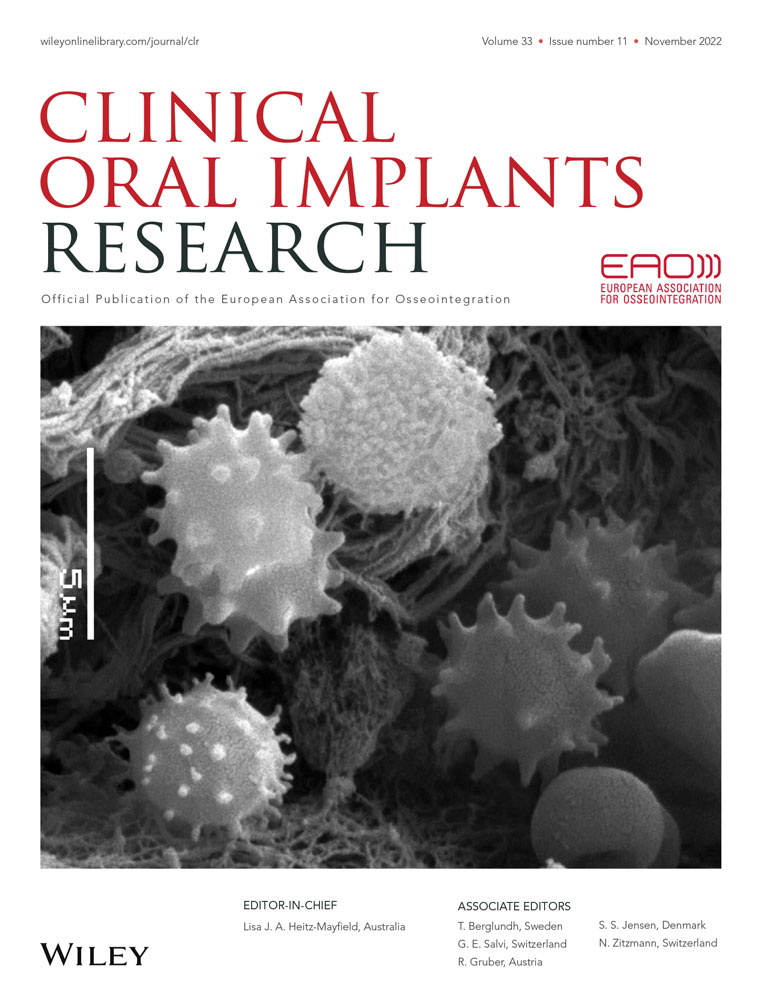Bucco-palatal implant position and its impact on soft tissue level in the maxillary esthetic zone
Abstract
Aim
The term “buccal implant position” is commonly used but lacks a precise definition and missing a reference point. Considering its major impact on peri-implantitis and esthetic failures the purpose of this study was to find a correlation between bucco-palatal implant positioning and the midfacial soft tissue level of implant crowns using newly defined Emergence-points.
Materials and Methods
Patients with unilateral single-tooth implant crowns in the region of the central or lateral maxillary incisor were included in this study. Digital intraoral scans were superimposed over a scan of the master cast or the original digital data set and analyzed in a computer planning program. In relation to the corresponding natural tooth, an ideal Emergence-point (EIDEAL-point) was defined from a frontal view. The distance to the real Emergence-point (EREAL-point) of the implant crown was correlated to apical displacement (AD) of peri-implant soft tissue. The distance of the implant shoulder (I-point) to the real Emergence-point (EREAL-point) of the implant crown was also correlated to the AD of peri-implant soft tissue. In cross sections, the horizontal distance between EREAL- and I-point represents the sagittal implant position (SIP), and the vertical distance represents the vertical implant position (VIP).
Results
Seventy-three patients met the inclusion criteria. AD ranged from 0 to 3.5 mm (AD = 0.87 ± 1.01), SIP from 0.2 to 5.1 mm (AD = 2.66 ± 1.64). Statistical analysis showed a significant inverse correlation between AD and SIP (ρ = −.55, p < .001). VIP, the implant inclination, time span since implant insertion, and phenotype revealed no significant correlation to AD.
Conclusion
The more palatal the implant was positioned, the less AD was observed. The position of the implant shoulder should preferably be planned more than 2 mm behind the ideal E-point. This E-point can be used for implant planning as it defines the ideal crown length for prospective planning.
CONFLICT OF INTEREST
All authors declare that they have no conflict of interest.
Open Research
DATA AVAILABILITY STATEMENT
Research data are not shared.




